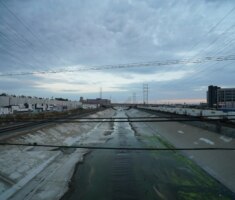For too long, California has been held hostage by environmental activists and litigants, backed by politicians who prioritize environmental policies over the needs of people, imposing scarcity and high prices that benefit special interests but harm households and small businesses. Even on their own terms, California’s environmental laws and regulations are failing. They are already to blame for devastating wildfires and self-inflicted water shortages, and now we have reckless proposals to develop offshore wind farms that threaten marine ecosystems. California’s leadership has abandoned common sense.
It doesn’t have to be this way.
California is a global leader in technology and innovation. With practical, cost-effective and sustainable strategies, we can produce abundant water and energy, lower the costs of food, housing, and transportation, and protect our environment without sacrificing prosperity.
Energy Strategy: Powering California’s Future ⚡
California should be setting the standard for affordable, reliable energy—not forcing people into rolling blackouts and some of the highest utility bills in the nation. The solution is an energy strategy that embraces responsible oil and gas production alongside rapidly advancing solar and nuclear power. We can deliver abundant, affordable energy to California while protecting the environment—and also set an example that other states and nations will enthusiastically follow.
Water Strategy: Capturing, Storing, and Expanding Supply 💧
California gets more than enough water, even in dry years—but mismanagement and misaligned priorities have left us rationing instead of thriving. By capturing storm water, expanding groundwater storage, upgrading reservoirs, recycling wastewater, and investing in desalination, we can secure our water future. Instead of scarcity, we can have abundant, affordable water for every Californian, including Golden State farmers.
California doesn’t have to choose between prosperity and environmental stewardship. With the right policies, we can have both.
For more information about CPC’s Californians for Energy and Water Abundance project, visit abundanceca.com.





